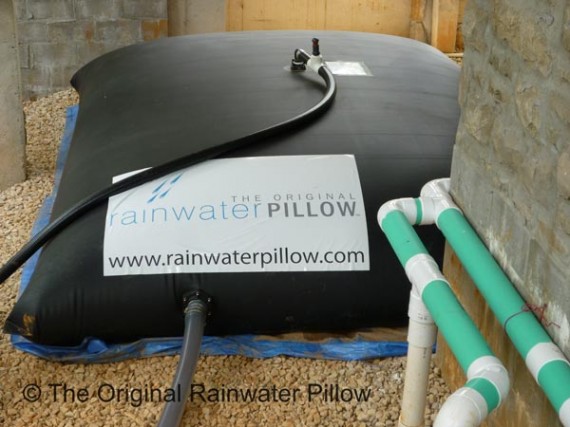
The Original Rainwater Pillow and How it Works
Dear Readers,
In addition to our future home, The Seed, being designed upon pins and with super thick, crazy well-sealed walls, we want all of the water that we use to be gathered from precipitation and stored in a pillow. This pillow will be stored within our building envelope (so that it is insulated) and underneath our floor. Imagine a giant waterbed in your basement that’s purpose is to provide you with showers and clean drinking water. That’s it.
The rainwater collection system we intend to use is called The Original Rainwater Pillow, created and sold by a gentleman named Jim Harrington. Based in Georgia, he was inspired to develop the rainwater pillow in 2008 during a period of intense drought in his area. Six years later, in 2014, his Original Rainwater Pillow won the U.S. Green Building Council’s (USGBC) Best of Building award for Best Product for Water Efficiency! We are excited to test out the Original Rainwater Pillow in The Seed…but first, how does it work??
How it works:
The Pillow tanks are specifically built horizontally to fit into ‘wasted spaces.’ Think crawl spaces, under decks or porches, basements…that way, the need for excavation for cisterns or a giant tank in the yard is eliminated. And what is additionally so genius about the Pillows, is that they are relatively easy to install- like a deflated air mattress, they are easy to transport and lighter to move around (which is wonderful for prefabrication mind-sets). We intend to keep our Pillow within the thermally controlled building envelope of our home: above the pins and right below our floor.
Rainwater harvesting all begins with rain and a roof. Your roof is kind of like your ‘rain catcher’…the larger the square footage that your roof covers, the more potential you have for more water. As the rain runs from your roof to the gutter system, it will travel to your downspouts and then go through a pre-filter. The pre-filter is intentionally ‘coarse.’ It allows water to move quickly through it during heavy downpours, while simultaneously separating leaves or other large debris.
